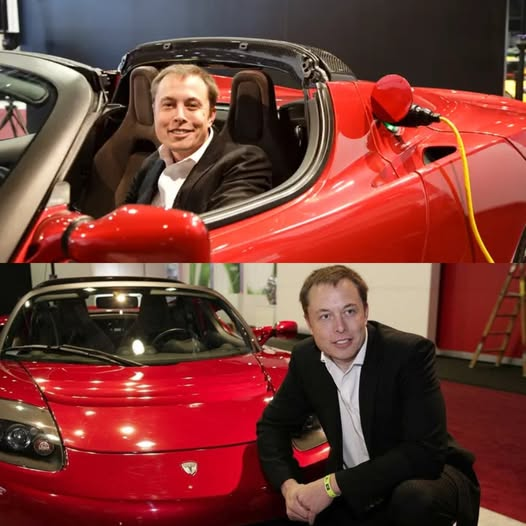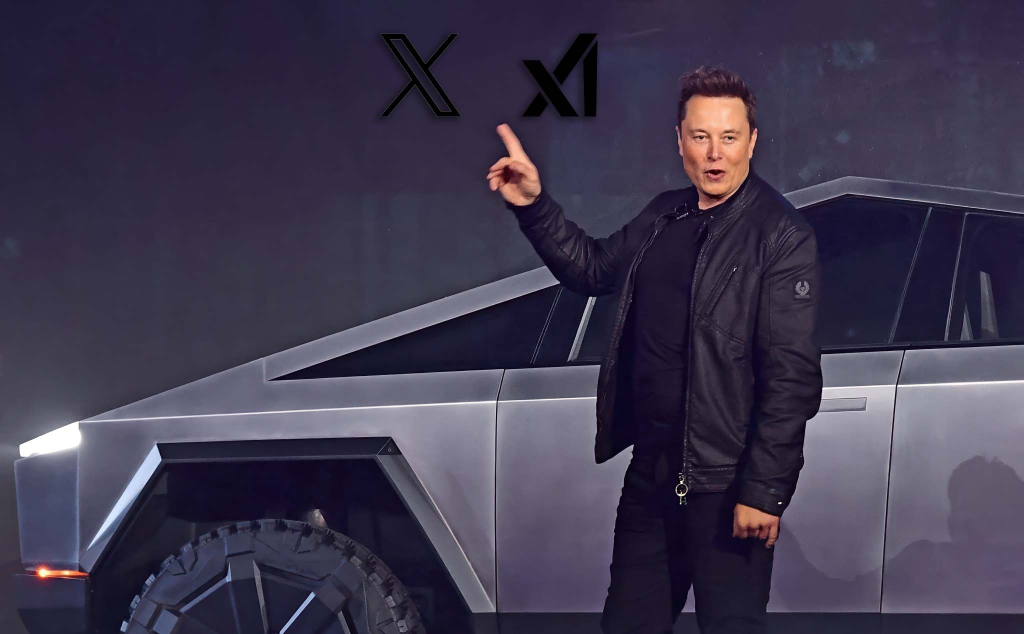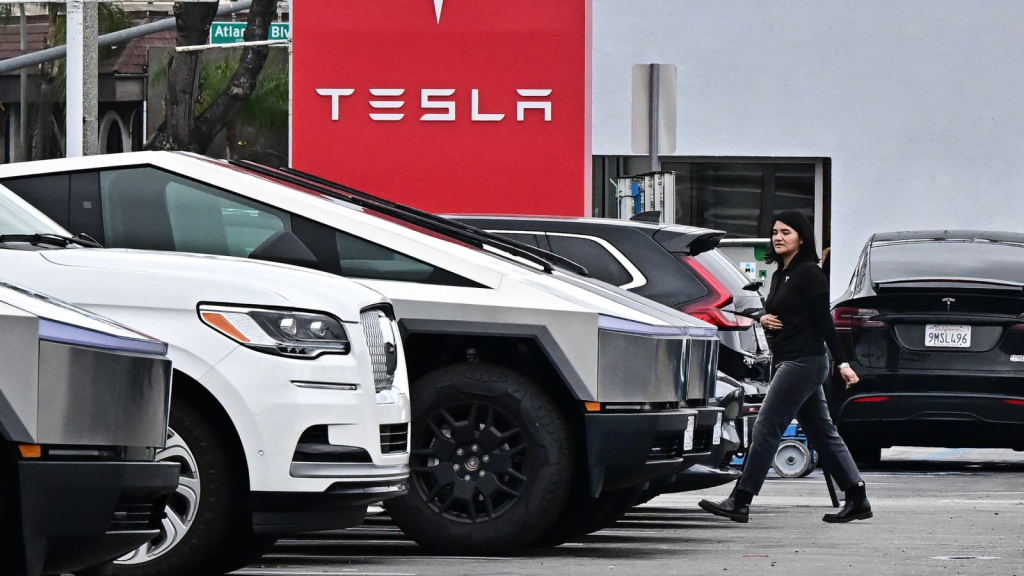
Tesla, the world’s leading electric vehicle manufacturer, has reached an astounding valuation of $700,000,000,000,000.00—an empire that stretches from the production of cutting-edge electric cars to advancements in energy solutions and autonomous driving technologies. With all this influence and power, one might expect a traditional corporate structure at the helm.However, Tesla operates without some of the key leadership positions typically found in Fortune 500 companies—specifically, the roles of President, Chief Operating Officer (COO), and Executive Vice President (EVP). This structure has created a unique loophole that grants Elon Musk, Tesla’s CEO, unprecedented control over the company.In most large corporations, roles such as President, COO, and EVP are integral to managing the company’s day-

to-day operations. The President is typically the second-in-command, the COO handles the operational side of the business, and the EVP manages key strategic functions.Together, these executives help balance the company’s leadership, ensuring efficient operations, strategic direction, and long-term growth.But Tesla, under Musk’s leadership, has chosen a different path. The company’s organizational structure is minimal, with Musk at the top, wielding near-total control without the need for a robust executive team.While Tesla’s Board of Directors and senior leadership team are still in place, the absence of traditional executive roles such as President, COO, and EVP is striking. Musk’s role as the sole decision-maker in Tesla’s corporate hierarchy has allowed him to maintain an extraordinary level of power and influence over the company.This unusual structure is more than just a reflection of Musk’s personality—it’s a strategic decision that has far-reaching implications for the company. While the absence of these roles could potentially create challenges in larger, more conventional organizations, Musk’s approach has allowed Tesla to operate with agility and flexibility, qualities that have been instrumental in driving the company’s rapid growth.Elon Musk has long been a figurehead of Tesla, but his level of control over the company far surpasses that of most CEOs. As the largest shareholder, Musk owns a substantial portion of Tesla’s stock, which gives him significant voting power in major decisions.Additionally, Musk’s unique leadership style allows him to make high-stakes decisions without the need for extensive consultations or lengthy approval processes from other executives.In most companies, the President or COO plays a key role in overseeing operational aspects, implementing strategies, and managing key business functions. At Tesla, however, Musk handles many of these responsibilities himself.This centralized power structure allows Musk to steer Tesla quickly in response to changes in the market, new technological advancements, and global trends. His direct involvement in virtually every aspect of Tesla’s operations—from product development to marketing—gives him unparalleled influence.One of the key benefits of Musk’s centralized control is the speed at which Tesla can execute decisions. Traditional companies often have to navigate complex decision-making processes involving multiple layers of leadership before implementing changes.Tesla, under Musk’s direction, can make decisions at a much faster pace, allowing the company to capitalize on opportunities and address challenges with remarkable efficiency.

Tesla’s structure creates a situation where there are fewer checks and balances on Musk’s power than in other corporations. By eliminating the roles of President, COO, and EVP, Musk has effectively created a corporate loophole that places him at the center of decision-making without the traditional safeguards that would limit his influence.This loophole gives Musk the freedom to operate without the need for a formal chain of command that includes other executives. For example, in companies with a COO, that individual would be responsible for overseeing the company’s operations and ensuring that day-to-day activities align with the broader strategic goals set by the CEO.However, Musk directly oversees Tesla’s operations, making decisions that affect everything from manufacturing processes to the development of new technologies.The absence of a President or EVP also means that Musk has a much more hands-on role in shaping the company’s strategic direction. While other executives in traditional companies would typically take charge of strategic planning and decision-making, Musk has the freedom to pursue his own vision for Tesla without having to consult with other high-ranking officials.While this gives Musk tremendous power, it also places a significant amount of responsibility on his shoulders. With fewer senior executives to share the burden of decision-making, Musk is solely accountable for Tesla’s success or failure.This dynamic has worked remarkably well for the company so far, as Musk’s vision and ability to execute quickly have been key drivers of Tesla’s meteoric rise.One of the defining characteristics of Elon Musk’s leadership style is his willingness to take bold risks. Whether it’s investing billions of dollars into the development of Tesla’s electric cars or launching SpaceX’s ambitious Mars colonization plans, Musk is not afraid to push the envelope and challenge the status quo.This willingness to take risks has been a hallmark of Tesla’s success, allowing the company to remain at the cutting edge of the automotive and tech industries.However, this risk-taking approach can also lead to significant challenges. By maintaining such tight control over the company, Musk has limited the diversity of opinions and perspectives that typically come with a larger executive team.

In more traditional organizations, executives often provide checks and balances, offering alternative viewpoints to ensure that decisions are made with a full understanding of the potential consequences. Without these executive roles, Musk’s decisions are subject only to his own judgment and vision, which, while often brilliant, can also be controversial.For example, Musk’s decision to take Tesla public in 2010 was a risky move that required significant investment and commitment. At the time, many experts doubted Tesla’s ability to survive in the competitive automotive market.However, Musk’s unwavering confidence in his vision and his ability to execute the company’s long-term goals helped Tesla thrive. Despite the challenges and financial difficulties, Musk’s direct involvement and leadership kept Tesla on track.While Musk may hold ultimate control over Tesla’s day-to-day operations, the company’s Board of Directors still plays an important role in overseeing its activities. The board provides a level of oversight and governance, ensuring that Tesla’s actions align with the interests of its shareholders.The board also has the power to appoint and remove executives, approve major business decisions, and evaluate Musk’s performance as CEO.However, Tesla’s board is not structured in the traditional way, as many of the key leadership roles remain vacant. Instead, Musk himself is often the driving force behind decisions.The lack of a formal executive hierarchy has made the board’s role somewhat passive, with Musk maintaining almost complete autonomy in running the company. This situation has led to questions about the governance structure at Tesla, with some analysts arguing that the company would benefit from a more traditional executive team.There are both advantages and disadvantages to the leadership structure that Musk has established at Tesla. On one hand, Musk’s hands-on, centralized control has allowed the company to remain agile and responsive in a fast-moving industry.The absence of a large executive team has enabled Tesla to make quick decisions and pursue new opportunities without being bogged down by bureaucracy or internal politics.On the other hand, the lack of traditional checks and balances raises concerns about governance and accountability. With no President or COO to provide oversight, Musk’s leadership can sometimes feel like a one-man show.While Musk’s vision and expertise have undoubtedly propelled Tesla to incredible heights, some critics argue that the company’s success is too closely tied to his leadership. If anything were to happen to Musk, the company could face significant challenges in transitioning to a new leadership structure.

As Tesla continues to grow, the question of its leadership structure may become more pressing. While Musk’s centralized control has been effective in the past, the company may eventually need to expand its executive team to ensure continued success.As Tesla explores new markets and ventures into areas like autonomous driving and artificial intelligence, having a more traditional leadership structure may help the company navigate the complexities of a rapidly evolving industry.However, for now, Musk’s unique approach to leadership at Tesla has proven successful. The $700,000,000,000,000.00 company is thriving under his guidance, and his vision for the future continues to push the boundaries of what is possible.Whether or not Tesla will maintain its unconventional leadership structure in the long term remains to be seen, but for now, Elon Musk holds the reins of the world’s most innovative and disruptive company.


